Vangi Bath 2type Recipe | Brinjal Rice 2023
Vangi Bath is a healthy and tasty brinjal rice dish popularly made in the Maharashtrian and Karnataka cuisine.
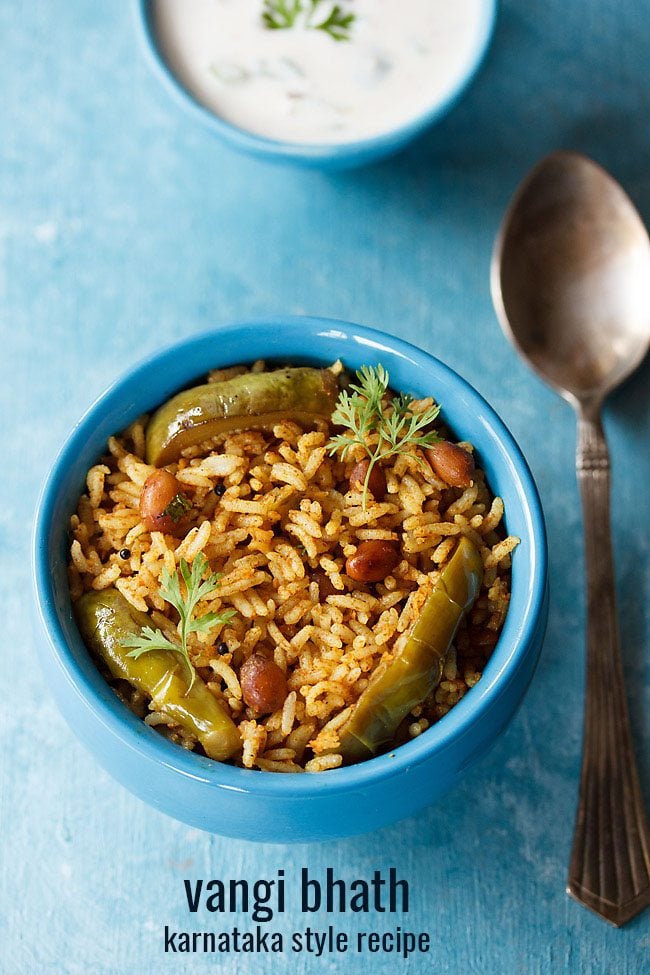
Both the regional recipes taste different as some of the ingredients and the spices that go into preparing them are different.
In this post, I am sharing both regional variations of making this recipe.
Vangi Bath Karnataka Style – Made with Vangi bath masala powder and tamarind pulp.
Vangi Bhath Maharashtrian Style – Made with Goda Masala and curd or tomatoes.
Both the recipes are healthy and taste good. You can make either of them as per your preference.
About Vangi Bath Karnataka Style
This is a delicious, healthy and vegan recipe of spiced brinjal rice from the Karnataka cuisine. Vangi means, brinjal, baingan, aubergines or eggplant. Bhath or bath or baath means rice.
Preparing vangi bath is very easy. All you need is to cook the rice first. Then prepare the brinjal gravy. Then mix the rice with the brinjal gravy. If you have extra cooked rice or leftover rice, then the vangi bath is quicker to prepare.
In this recipe, I have used readymade organic vangi bath masala powder from the Phalada brand. The taste of the vangi bath depends on the quality of the vangi bath masala. So do use a good quality one. You can use homemade or store brought.
Generally, green brinjals are used. But you can also use purple or purple striped brinjals. Just make sure that the brinjals are tender and fresh.
You can use any regular variety of rice like sona masuri. This is a no onion no garlic recipe. If you want, you can add onions.
Serve vangi bath with raita or plain curd. You can even pack it in the tiffin box.
Step-by-Step Guide
How to make Vangi Bath (Karnataka Style)
1. First, soak 1 heaped cup rice in water for 30 minutes. Use any regular rice. I used sona masuri rice.
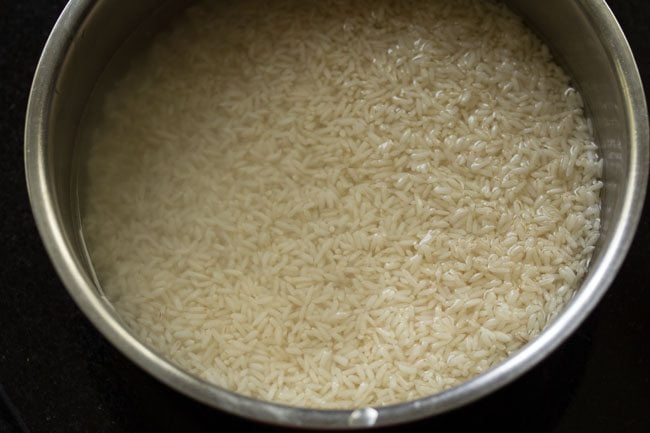
2. Then pressure cook the rice with 2 cups water, ¼ teaspoon salt for 3 to 4 whistles on medium flame or for 11 to 12 minutes. You can also cook the rice in a pot. If cooking in a pot, then you may need to add more water. Depending on the quality of rice, you can even cook for 2 whistles or 9 to 10 minutes.
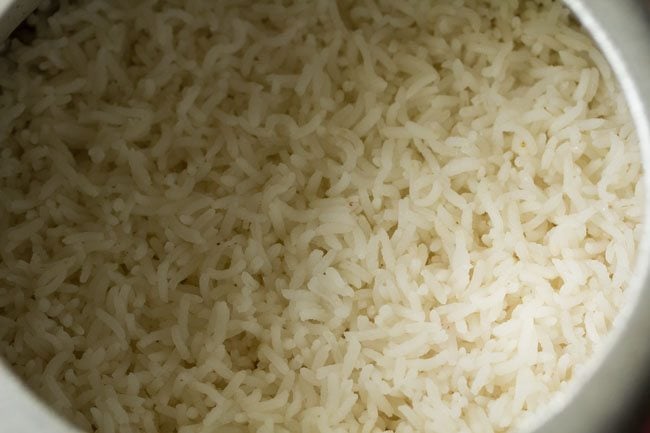
3. Soak ½ tablespoon tightly packed tamarind in ¼ cup hot water for 20 to 30 minutes.
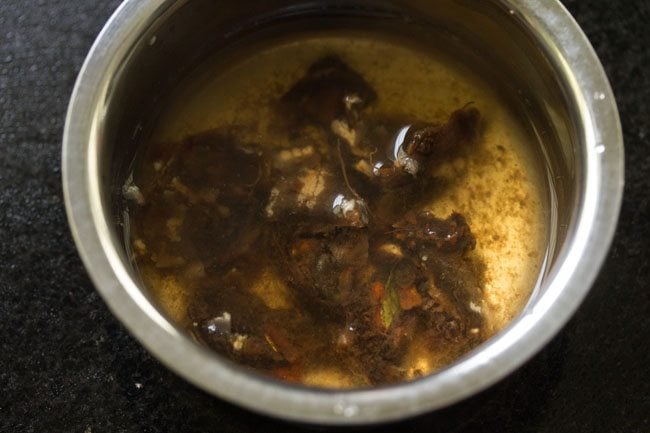
4. Later squeeze the soaked tamarind in the water to get the tamarind pulp. Strain and keep aside
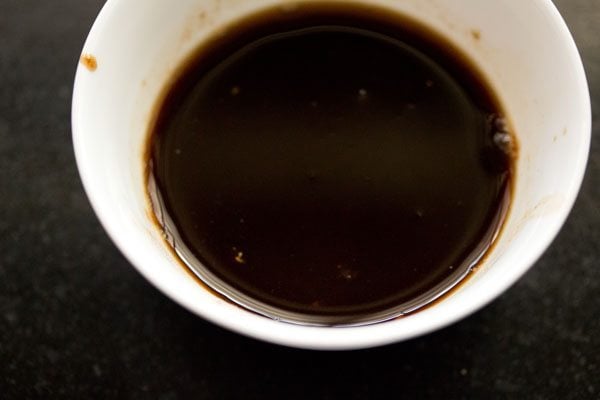
5. when the pressure settles down on its own, open the cooker’s lid and fluff the rice. You can allow the rice to cool in the cooker itself or spread rice on a large plate/thali or tray.
Allow the cooked rice grains to become warm or cool down. Cover and keep so that the rice grains do not dry out. The cooked rice grains should be separate.
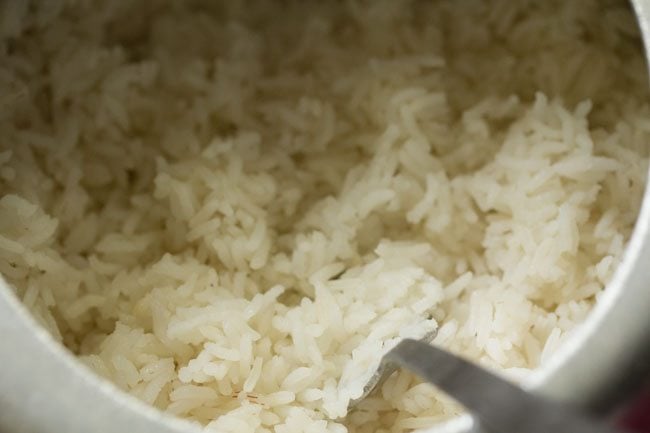
6. when the rice is cooking, rinse, remove the crowns of the brinjals (vangi or baingan) and slice them vertically in 4 pieces.
As soon as you chop them, place them in a bowl containing water to which some salt has been added.
Do make sure that there is sufficient water covering the brinjals. Allow them to be in the salted water for 15 to 20 minutes.
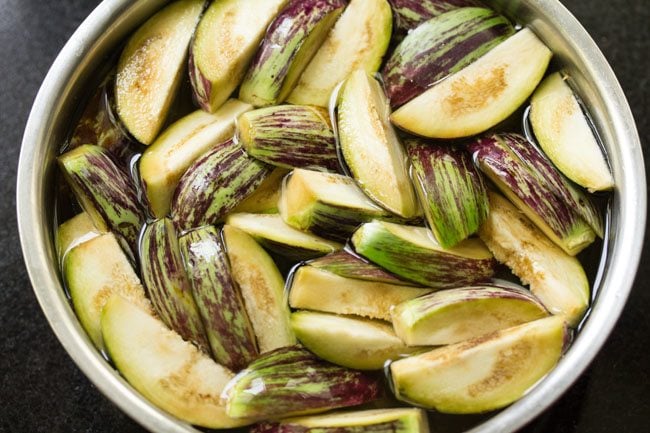
Making vangi bath
7. Heat 2 tablespoons peanut oil (can also use sesame oil or sunflower oil) in a pan or kadai. Add ½ teaspoon mustard seeds.
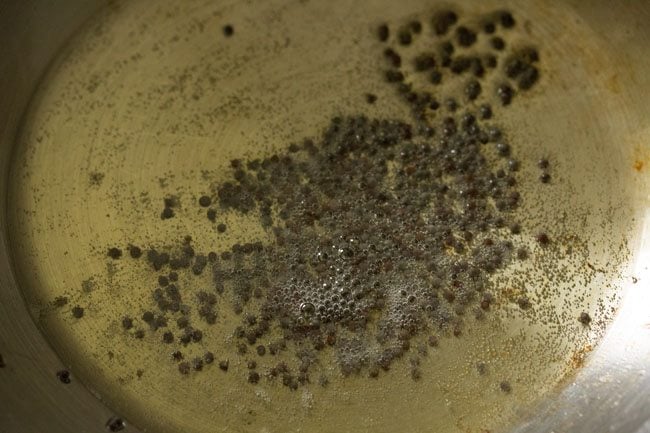
8. Once the mustard seeds begin to crackle, then add ½ teaspoon urad dal.

9. Next add 2 tablespoons roasted peanuts or cashews.
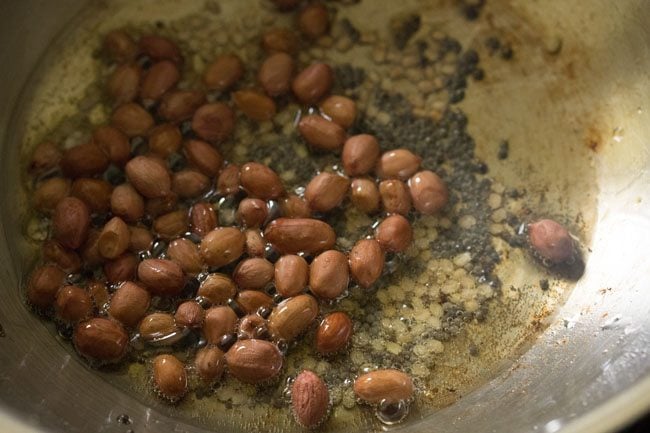
10. Sauté till the urad dal becomes golden.
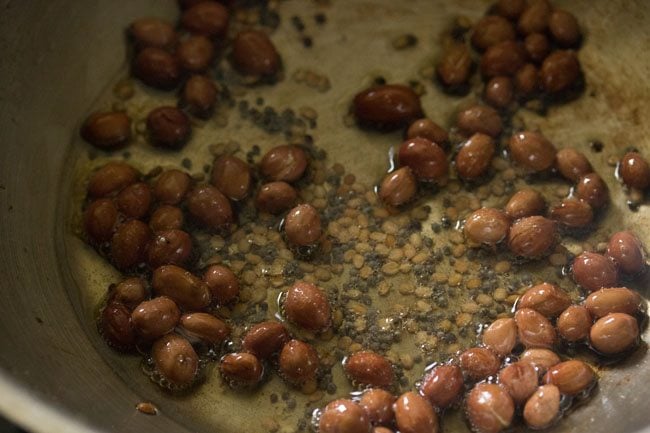
11. Then add 1 to 2 dry red chilies, 1 sprig curry leaves or 10 to 12 curry leaves and 1/8 teaspoon asafoetida (about 2 pinches of asafoetida).
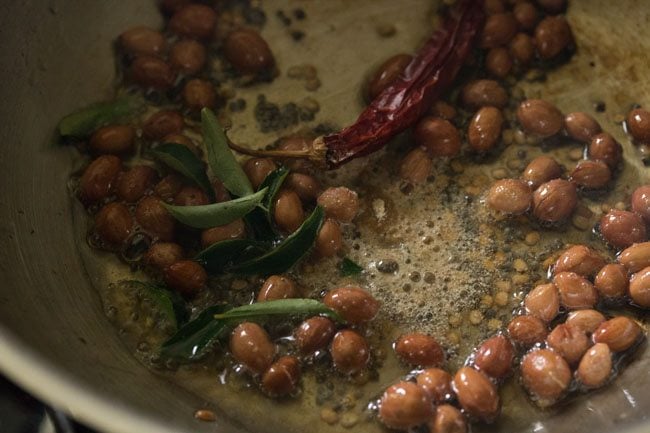
12. Add the brinjals. Just remove the brinjals from the salted water and add in the pan. Be careful as the mixture splutters when adding brinjals.
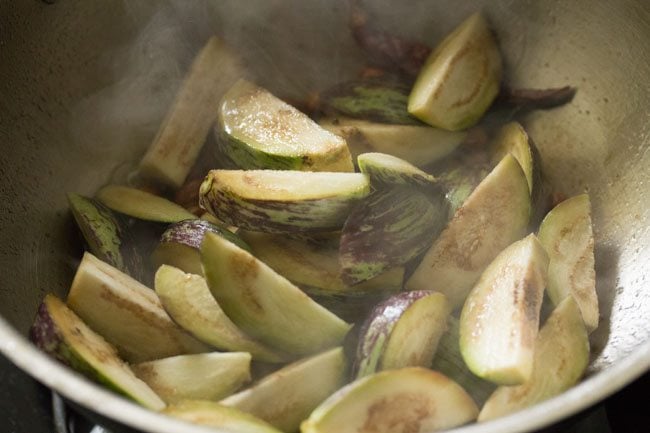
13. Mix them with the rest of the tempering mixture.
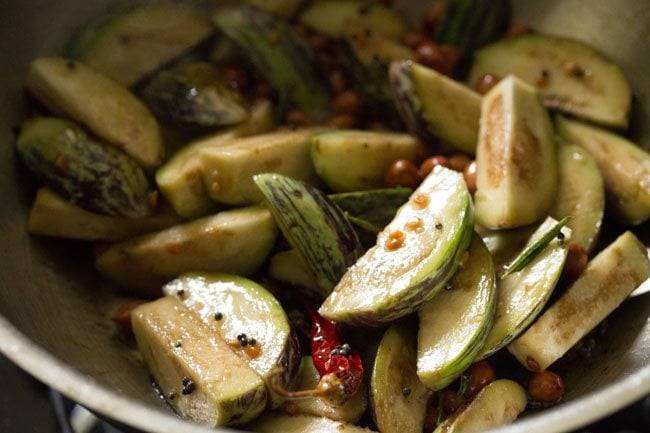
14. Add ¼ teaspoon turmeric powder. Also add salt as per taste.
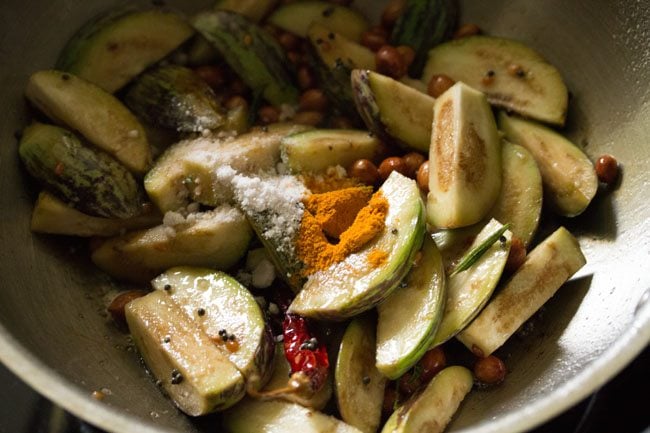
15. Mix the turmeric powder and salt very well.

16. Cover the pan with a lid and let the brinjals get half-cooked. Do check at intervals. while cooking, if the brinjals start sticking to the pan then add some water. Then cover and cook.
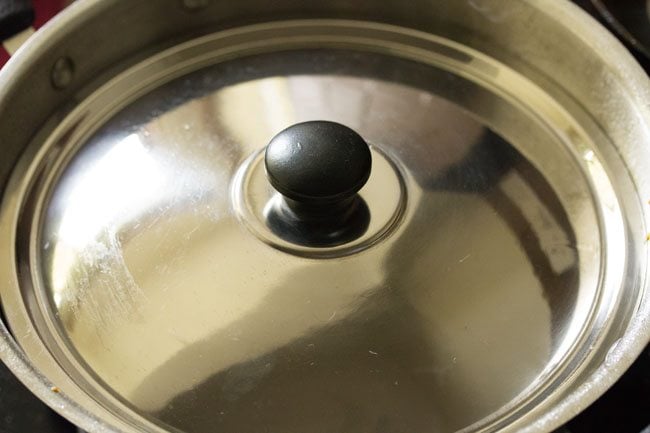
17. Half cook the brinjals.
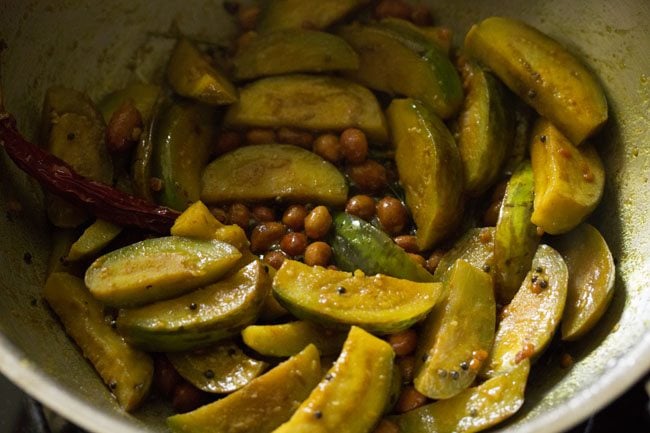
18. Once they are half done, then add the tamarind pulp.
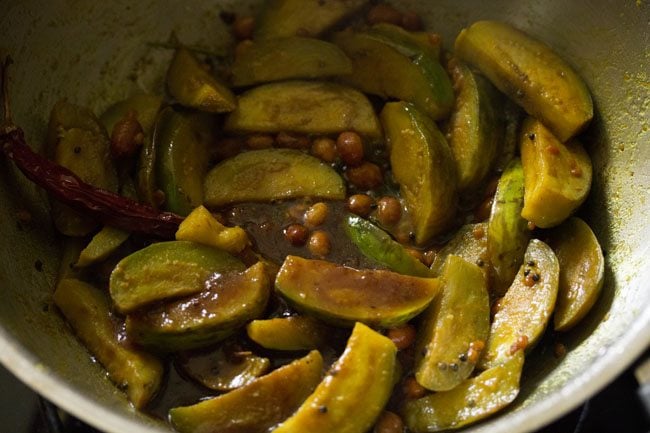
19. Then add 2 to 2.5 tablespoons vangi bath masala powder.
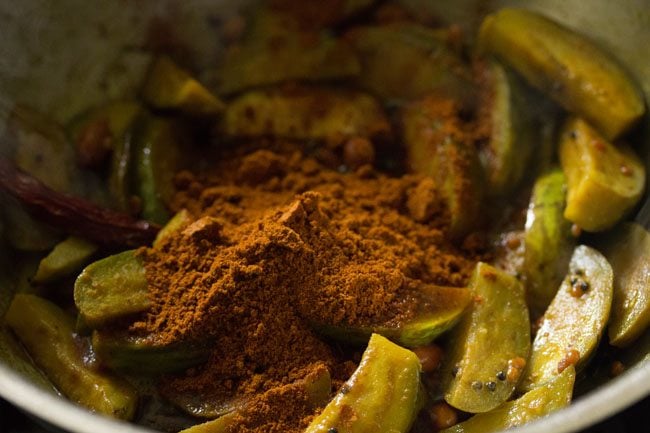
20. Mix very well and continue to cook without the lid. If the masala along with brinjals starts sticking to the pan, then add ¼ cup water and continue to cook.
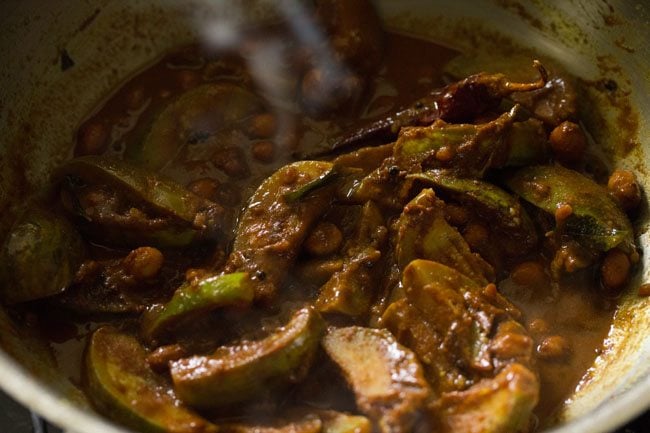
21. Once the brinjals are cooked well, add 2 tablespoons grated coconut and ¼ to ½ teaspoon jaggery powder.
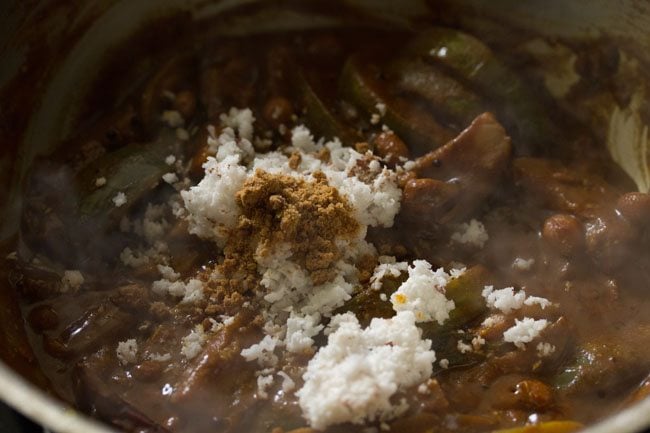
22. Mix again very well. The brinjal masala is thick. But for some moisture you can have a semi gravy consistency in the brinjal masala.
Check the taste and you can add some more jaggery powder or salt if you want.
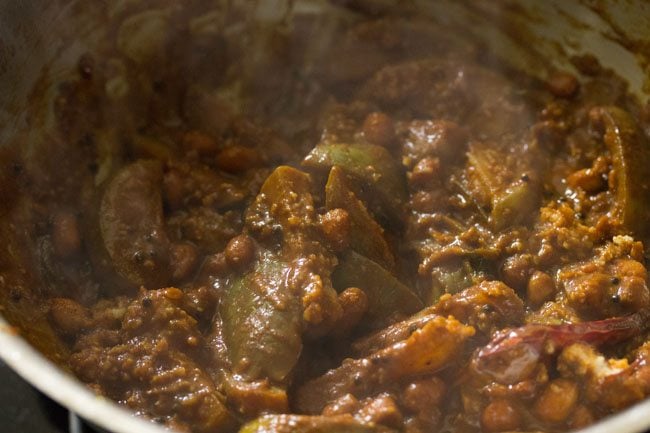
23. Keep the pan down and add rice in two to three parts. Mix gently.
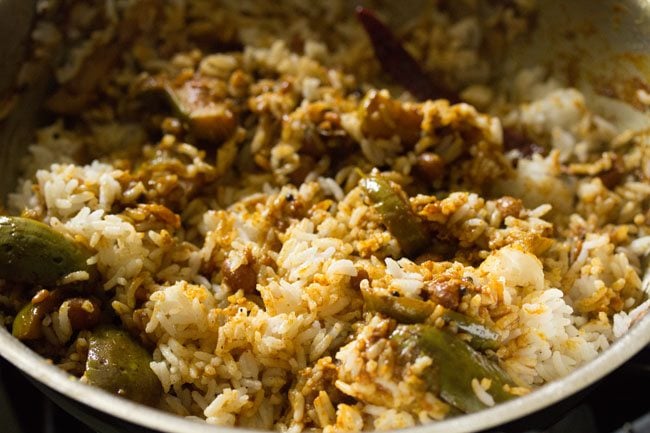
24. Add the next portion of rice and then mix well.
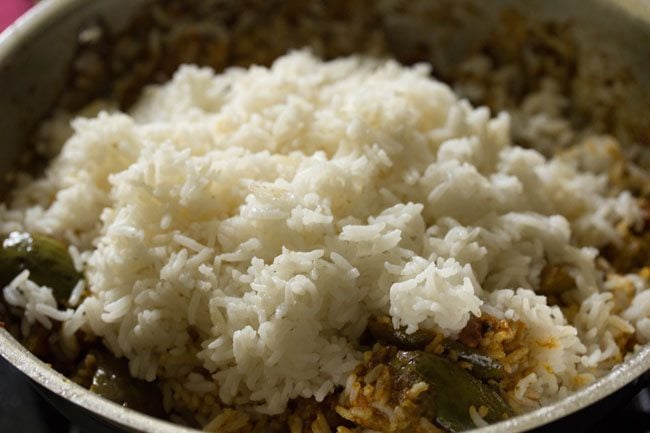
25. Mix gently but very well so that everything is mixed evenly.
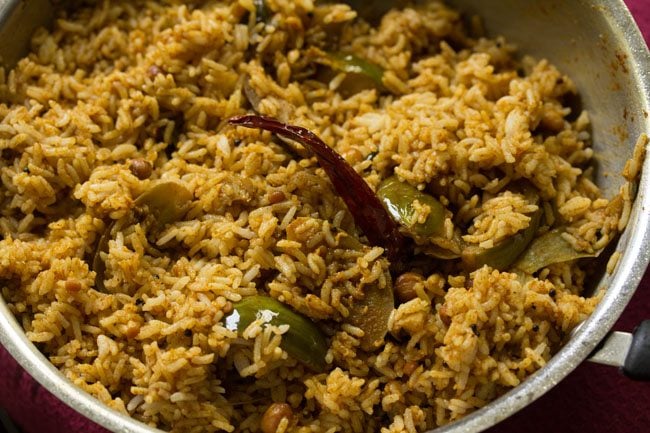
26. Serve vangi bath with raita, papads or chips.
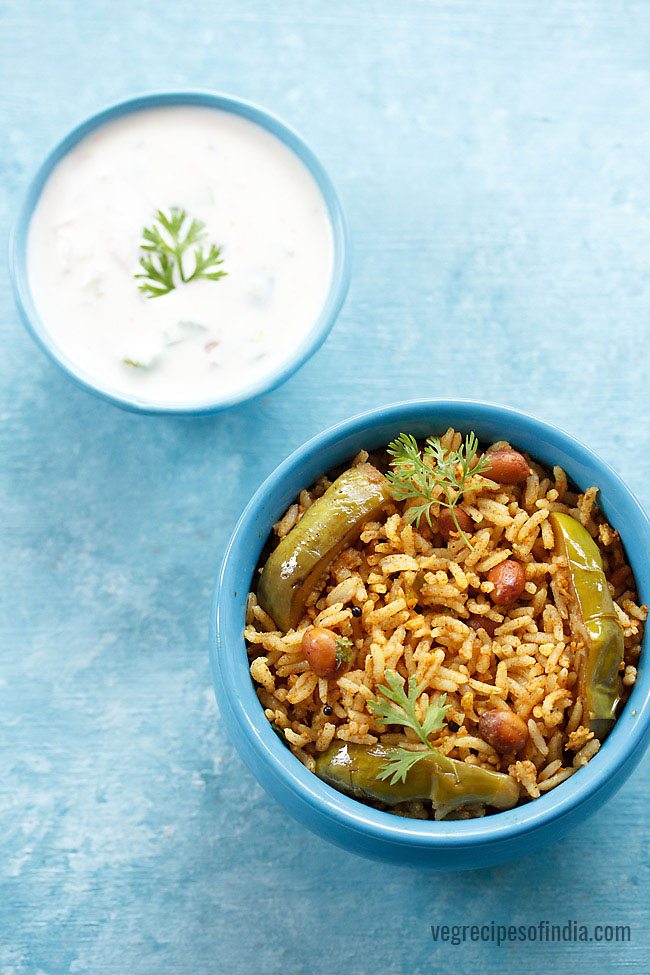
About Maharashtrian Vangi Bath
This is a tasty, nutritious and popular Maharashtrian one-pot meal dish of spiced rice dish made with brinjal and freshly ground spices.
This brinjal rice recipe is prepared in the same way as a Masale bhaat or Tondli bhaat (Ivy gourd rice). Goda Masala is added in these rice recipes and this spice blend gives the Maharashtrian vangi bath its unique flavor, taste and aroma.
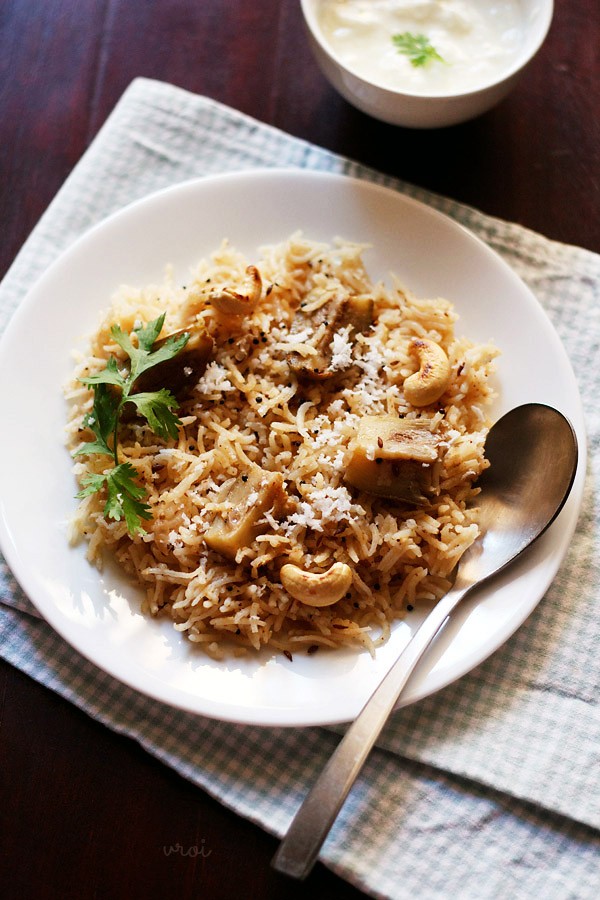
In this brinjal rice recipe, I have roasted and ground the spices to prepare the goda masala, so there is no need of having a ready goda masala. If you do have goda masala powder, then skip grounding the spices.
It is a relatively easy recipe to prepare. One-pot meal which is healthy as well does not take much time if you have ready goda masala. I have cooked the rice in a kadai, but you can also cook in a pressure cooker.
I have added onions in this recipe. You can easily skip them if you don’t have onions and add a pinch of asafoetida (hing) in the tempering instead.
Serve vangi bath plain or with a side bowl of yogurt or raita.
Step-by-Step Guide
How to make Maharashtrian Vangi Bath
1. On a low flame in a small frying pan, dry roast the whole spices till they are aromatic.
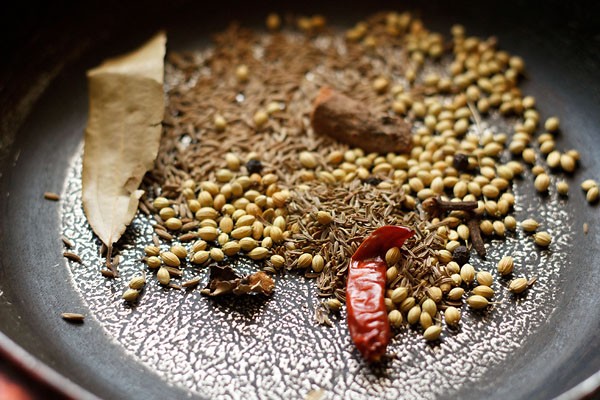
2. Bring the roasted spices to the side of the pan and add the desiccated coconut and sesame seeds.
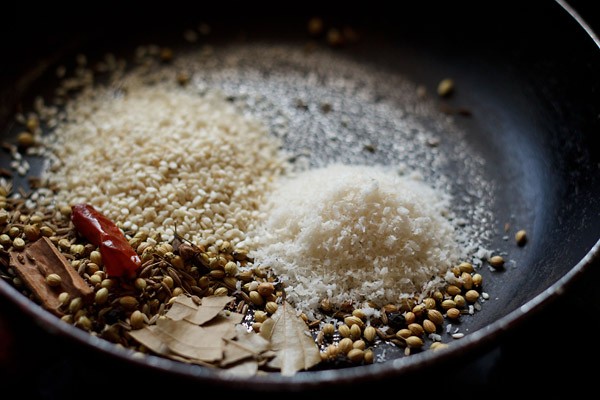
3. Stir & continue to dry roast till the coconut becomes golden. Keep stirring regularly so that the coconut does not get burnt. Let this spice and coconut mixture cool.
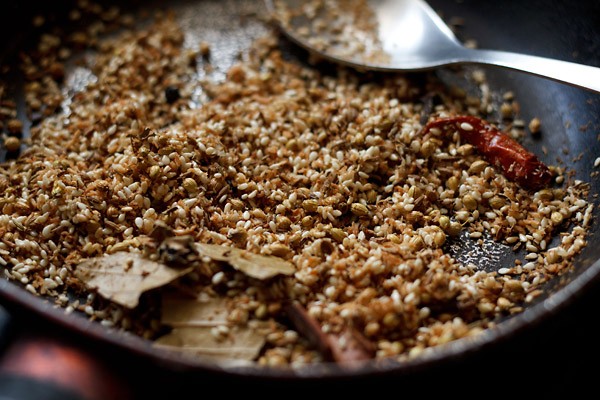
3. Soak the rice in water for 30 minutes and then drain them. Keep aside. You can add basmati rice or ambe mohur rice (mango blossom rice) and even sona masuri.
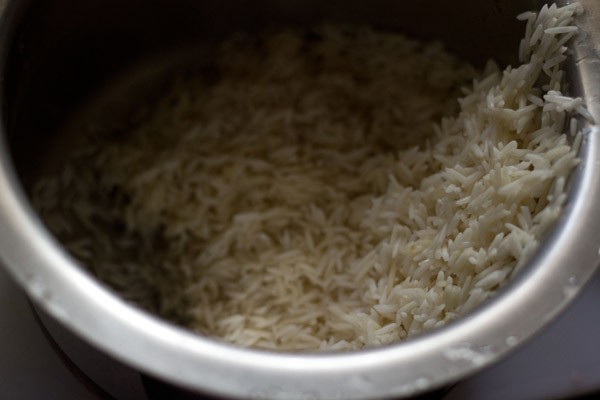
4. Quarter or chop the brinjals (vangi). Keep the chopped brinjals in a bowl of salted water for 15 minutes. This does not discolor them and gets rid of the bitterness if any.
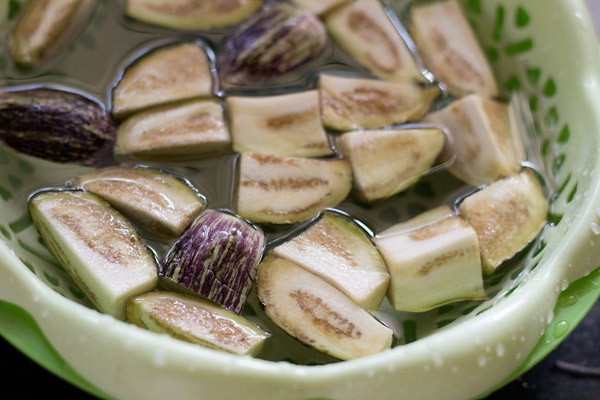
5. Once the roasted spices + coconut mixture gets cooled, grind them fine in a dry grinder or coffee grinder.
Only 2 to 3 tsp of the goda masala (as per your taste) needs to be added to the rice.
The remaining goda masala can be refrigerated and added to vegetable dishes or lentils.
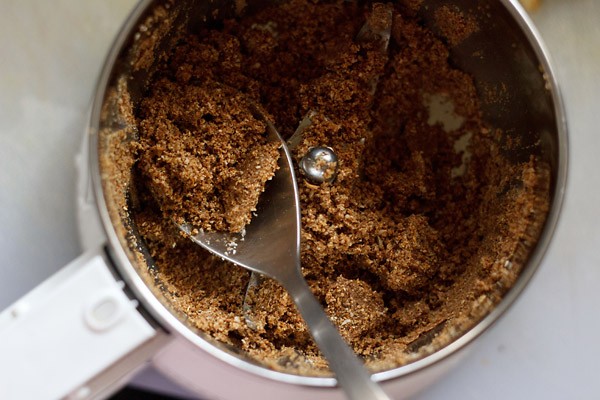
6. Heat oil in a large thick bottomed pan. First, splutter the mustard seeds and cumin seeds.
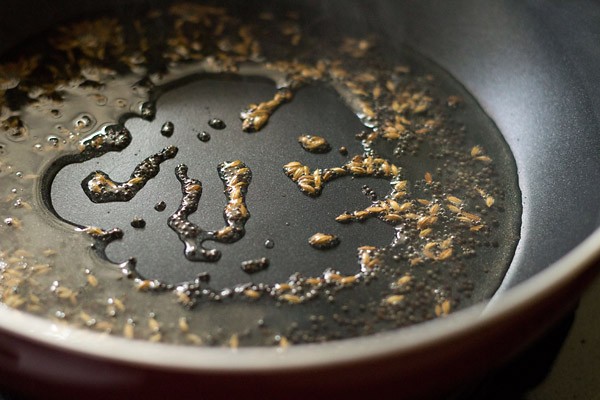
7. Then add onions and saute till the onions turn translucent.
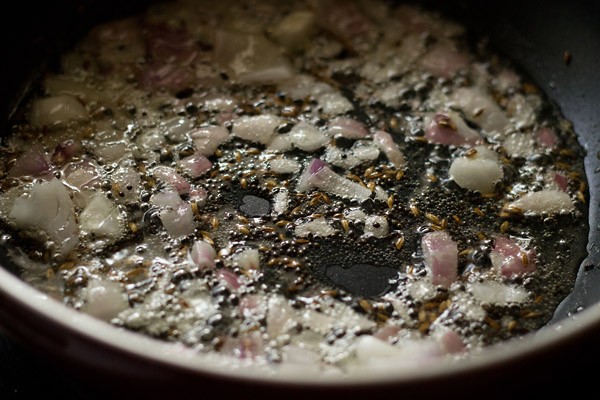
8. Add curry leaves and green chilies. Stir.
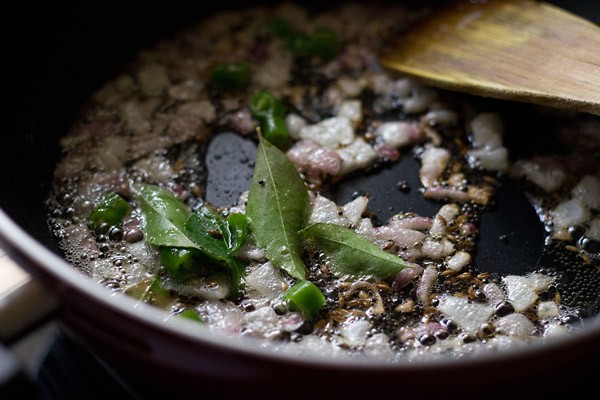
9. Then add the drained brinjals (vangi) along with turmeric powder. Stir and saute for 3 to 4 minutes.
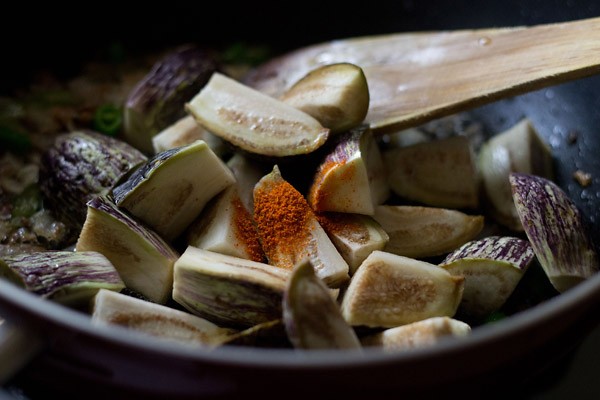
10. Stir and then add the soaked rice, 2 to 3 tsp of the freshly ground goda masala and yogurt.
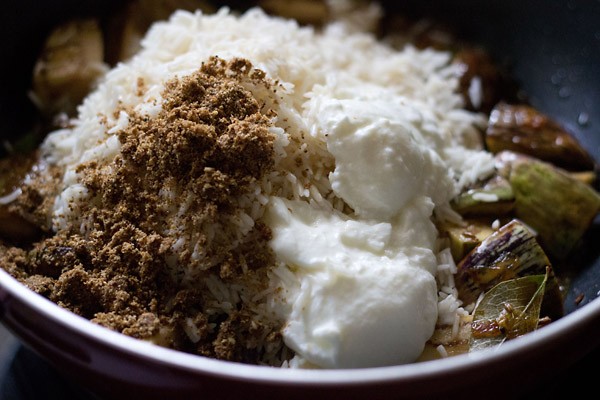
11. Stir and pour water. Season with salt.
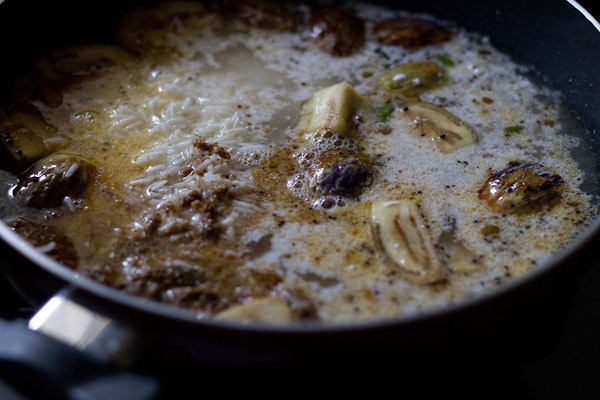
12. Stir very well.
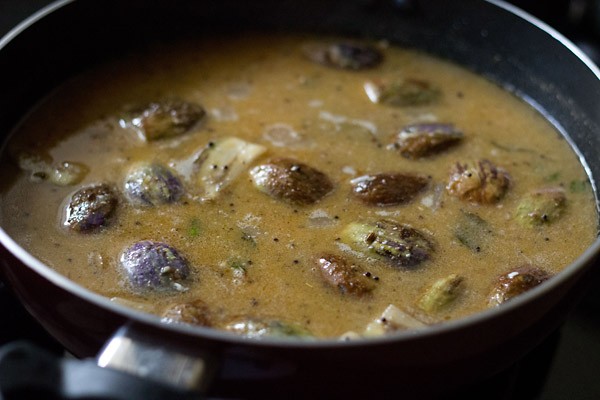
13. Cover with a lid and cook the rice on a low flame till the grains are tender and cooked.
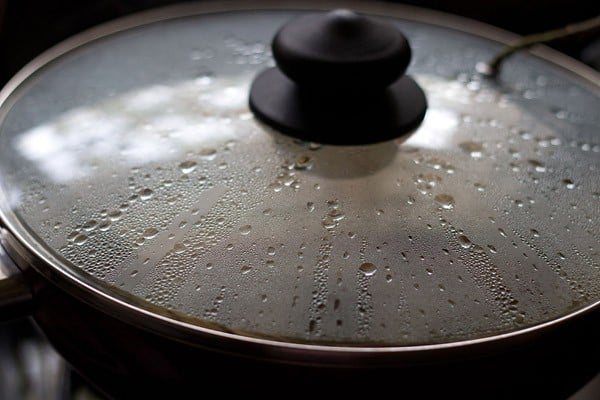
14. Meanwhile, roast cashews in a pan till they get some brown spots on them. You can also add peanuts instead of cashews. Just roast them in the same way.
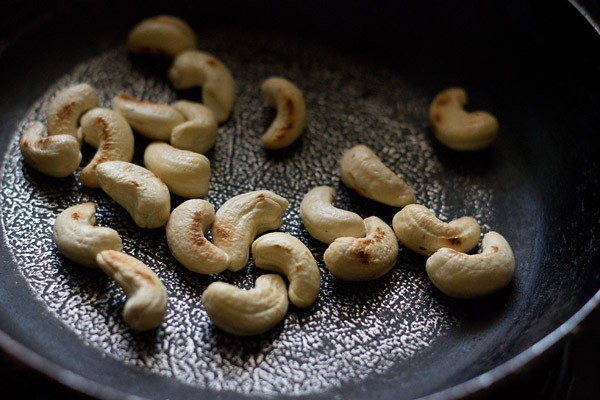
15. Once the rice is cooked, fluff gently.
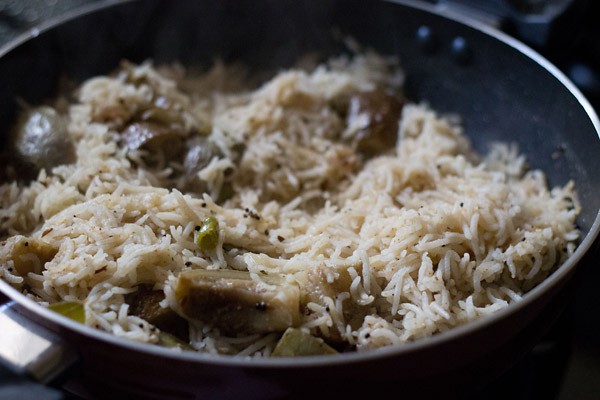
16. Add grated coconut, chopped coriander leaves and the roasted cashews. Mix gently.

17. Serve vangi bhat plain or with curd or with raita hot or warm. You can also top with a bit of ghee while serving.
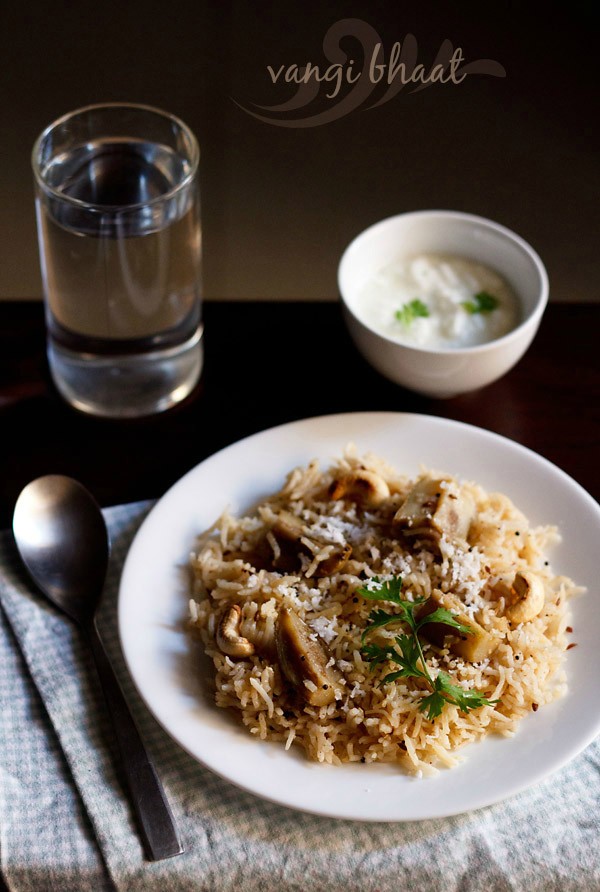












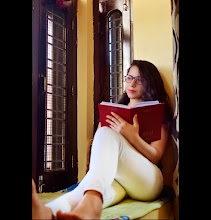









Post a Comment